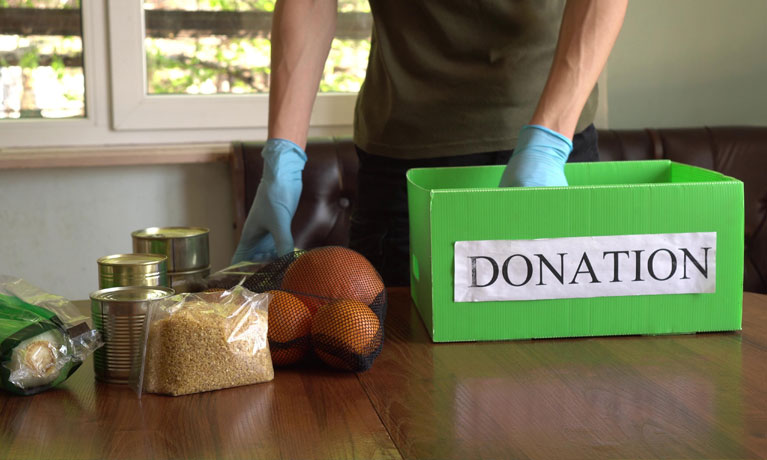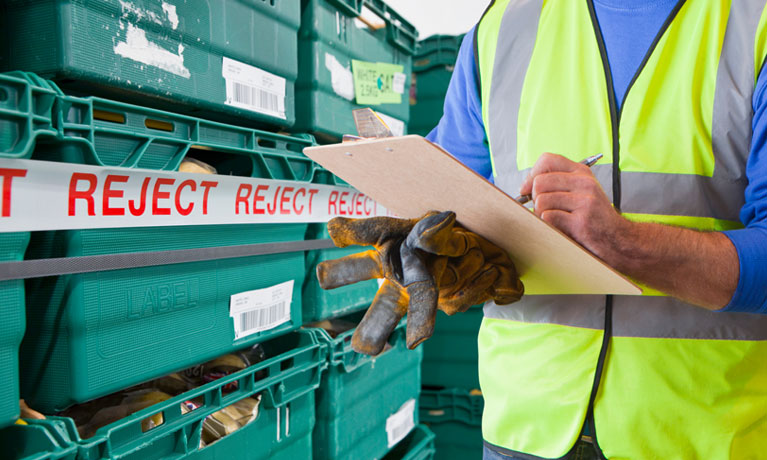By Jordon Lazell
COVID-19 has had a wide reaching impact across the food sector. With the emergence of new food trends, what are the longer-term implications of the initial disruption?
The impact of the COVID-19 pandemic on the food system has been far reaching. From the way in which consumers shop to the operating environment of retailers and the hospitality industry, to those working to produce and manufacture food products, the virus has had system-wide implications for both the sector’s immediate future and its longer-term prospects. The pandemic has brought to light both imminent challenges, as well as the strengths of an innovative sector. This blog piece considers what the recent disruption might mean for the future of food in the UK.
The economic impact of the pandemic has led to an unprecedented rise in the usage of food banks. The Trussell Trust reported that in the first two weeks of the lockdown across their network, 6,250 emergency food parcels were provided daily, with 3,000 of these given to children. Food banks confronted the challenge of sourcing, collecting and sorting sufficient provision within disrupted food aid operations. Concerns about potential infection meant donations were quarantined for a period before being distributed. Vital community services such as social supermarkets had to place constraints on how they normally function, limiting their role as important places of social interaction and support. Despite these initial concerns, there has been a rise in donations. There are numerous examples of food businesses donating surpluses resulting from changing demands. Companies operating emergency-only services, such as in the utility sector, have encouraged its employees to volunteer at food banks. At the community level, there has been great success in how people have organised themselves around ensuring access to food in a just and dignified way, whilst at the same time adapting to lockdown conditions.

Looking forward, food banks are no solutions to poverty. The full economic effects of the pandemic are still playing out and therefore the continuity of highly demanded food bank services must be considered. The long term solution to those who do not have sufficient access to food is not to increase charitable food provision. Instead, it is a task of reducing the flow of people that end up in such situations. Food banks are an emergency service and to ensure that people can recover and prosper. The triggers that are causing people to be placed in destitution must be tackled.
The availability of food on supermarket shelves has been one of the most telling and universally applicable implications of the corona virus. The initial disruption triggered panic buying and stock piling behaviours, driven by consumer perceptions of food shortages as a human response of ensuring there is sufficient sustenance to face an unfamiliar or dangerous situation. This transformed the usually mundane nature of shopping. Consumers faced a new landscape of challenges on how to best access, provision and sustain themselves with food. Whilst supermarket shortages eventually returned to normal levels, new food trends resulted from new lockdown determined routines.

The requirements to stay at home transformed the routines around which food consumption is typically organised. Shopping habits have altered towards being more conscious and carefully planned, but also stressful. Contrasting reports reveal how consumers have both turned towards comfort foods to retain a sense of normality, as well as experimenting with new recipes and learning new food related skills. The absence of products has also led consumers to break brand loyalty. Independent retailers, such as local butchers, bakers and grocers, are also experiencing a revival. Renewed importance has been given to the ability to fulfil shopping via home delivery, with this service not able to keep up with demand at certain points during lockdown. Tesco increased its capacity to 1 million weekly online delivery slots. Supermarkets have seen a record period of sales, £2 billion worth of sector growth in March alone, and have been applauded for continuing to provide food to the nation.
What is not known is the extent to which these emerging trends and others will have a long-term impact. Changes in other areas of society, such as the move to longstanding home working practices, will have a knock-on impact. The limitations around gatherings of people and the absence of tourism trade have severely impacted the hospitality industry. Only with further insight will we know the consequences of these trends, such as what the impact will be of a prolonged period of the not eating out, or how the progress towards more environmentally friendly ways of eating have been affected.
A further area where questions remain is the impact on the issue of food waste, particularly at household level. More than 1.3 billion tonnes of food are wasted each year globally, with UK households throwing away 7.3 million tonnes of the total 10 million tonnes generated in the UK annually. Food waste is a key contributor to climate change in methane emissions generated from food disposed at landfill, not to mention the waste of water, energy and resources directed to grow and supply food that is not eaten. It is well established that household food waste is intrinsically linked to food consumption patterns and how they are configured around the routines and habits of everyday life. With the circumstances around which our food behaviours are seeing change, it is logical to assume that wasteful behaviours will be influenced accordingly.
A poll undertaken by the organisation Hubbub claimed that 48% of their respondents say they are throwing less food away. WRAP have also reported that consumers have improved their household food management over the lockdown period. This somewhat contrasts with local councils reporting a rise in food wasted following the food hoarding phase. The rising popularity of takeaways is also causing a great amount of food to be wasted. A survey by Just Eat and the Sustainable Restaurant Association claim that households commonly order large portions, with one in four respondents admitting that any leftovers end up in the bin.
These reported trends support the complexity of both understanding and solving the food waste problem. For households, over-purchasing and over-consumption remain leading drivers of waste. How households manage whether food items are consumed rather than wasted depends upon a range of factors that we simply cannot fully understand from a survey response. The way in which households are navigating their food procurement and consumption and how this is worked out in the home are not currently known. A range of factors, such as the fallout from the collapse of school, leisure and work routines as well as the changing shopping patterns and new food trends raised here so far (and also further factors not yet known), mean that an accurate picture of current behaviours is currently untenable.
Food supply chains have also experienced both initial problems and face longer-term challenges. An initial challenge that emerged was the large amount food that had become surplus to the hospitality sector’s requirements following its close-down. Key partnerships were formed between surplus redistribution organisations and food businesses to prevent waste and feed those in need. Food donation platforms, such as Plan Zheros have allowed food businesses to safely donate their surplus food to nearby charities and community groups.

A further sector-wide problem is the disruption to the labour force and the need to put in place virus protection measures for a workforce operating in close proximity. During the initial impact of the corona virus, this proved to be a particular challenge for food manufactures due to the soaring rise in demand. This caused production to increase by up to 50% and in some cases required a move to 24/7 operations. The logistics sector also saw similar disruption to its workforce and a similar demand increase. One area where this has been most prominent, however, has been the shortage of migrant labour to harvest fruit and vegetables. Food has been left to rot in fields because of a shortage of pickers and packers. The farming industry has called for a ‘land army’ to sustain UK food production during the COVID-19 crisis.
Overall, the potential for interruption to the stability of food supply will remain until the threat of the virus been curtailed completely. The disruption experienced has raised critical questions of the sector’s future resilience to future potential disruptions, in particular the reliance on just-in-time supply chains and a low paid migrant workforce. Businesses that have been able to adapt and succeed are those that have transparent, short supply chains, highlighting the potential problems with globalised strategies of food procurement as a potential dispute to how future food security is assured. Commentators have called for a re-evaluation of current food policy to ensure a long-term plan towards a resilient, healthy and sustainable food system is at its centre. With a new agriculture bill to replace of the EU’s Common Agricultural Policy currently being negotiated in Parliament, this is an ample opportunity to grasp a more sustainable food future. Maybe. However, across the challenges and future implications considered here, it is evident that there is a lack of an accurate picture of both the full remit of the impact of the pandemic across all areas of the food sector, as well as what interventions are available to influence how these impacts are currently unfolding. Research into such topics and the resulting knowledge will be critical in moving forward.




Comments are disabled